|
Dennis Hopper's second feature as director has a bit of a reputation, one not really deserved but shared by second films of a select few other filmmakers who made a bit of a splash with their debut film. Think Richard Kelly, who after dazzling everyone with Donnie Darko became the target for bemusement and brickbats when he unleashed his follow-up, Southland Tales. If you're looking for a more high-profile name, you might like to remember that Dances with Wolves was Kevin Costner's award-winning first film as director, which he followed with the widely derided The Postman. Hopper's debut feature, however, was more than a critical and commercial success, it was a cultural phenomenon, one that captured the zeitgeist of the day better than any other film of its generation. It was also hugely profitable. Made on a budget of approximately $400,000, Easy Rider went on to gross $60 million, and in no time at all every major American studio was funding its own youth-targeted movies in the hope of reproducing Hopper's success. None of them did. Hopper was thus hot property and all eyes were on what he would do for his follow-up feature. Despite winning the Critics Prize at the Venice Film Festival, however, The Last Movie was a financial and critical bomb. It was ten years before Hopper was allowed to direct another feature, and never again was he given the sort of creative control he had here.
As well as directing, Hopper plays Kansas, a stunt co-ordinator and horse wrangler working on an American western being shot in a small town in Peru. After the production wraps, Kansas decides to stay on, having fallen for local former prostitute Maria (Stella Garcia). Their seemingly idyllic life complicates, however, when the local priest (Tomas Milan) informs Kansas that some of the townspeople have started imitating the filmmaking process with hand-made effigies of movie equipment, seemingly unable to tell the difference between reality and movie fakery.
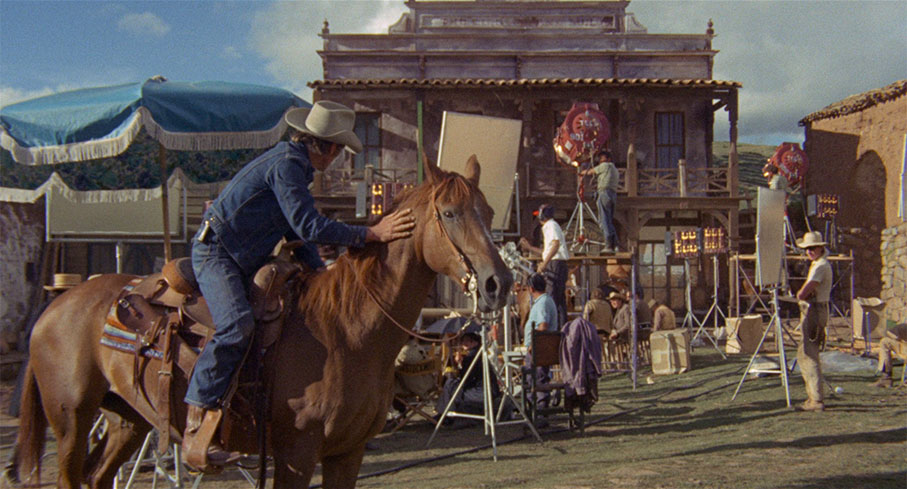
Those are the basics, but there's a good deal more to the film than this simplistic outline suggests. Stylistically, it almost plays as if two separate movies set in the same location and timeline have been melded into a single feature. Much of the above-detailed story unfolds during the first third of the film and is revisited and – to a degree at least – concluded in the last. Sandwiched between these conceptually experimental and non-linear bookends, however, is a second story featuring Kansas and Maria that, whilst narratively connected to the segments that precede and follow it, has a somewhat more conventional narrative structure. Here, Kansas teams up with fellow American Neville Robey (Don Gordon), who ekes a living plucking ducks for a local hotel kitchen but who also owns a gold mine that he is convinced will make him rich if he can just raise $500 to purchase the equipment he needs to make his way there and start digging. To this end, he and Kansas hook up with wealthy visiting American Harry Anderson (Roy Engel) and his family and arrange some entertainment for them, which includes a sex show at the brothel at which Maria once worked.
Although stylistically different, these two sections do feed into each other and share similar themes. In both, American capitalism is shown to be harmful to the local community, whether it rolls into town as a film production company or as rich American tourists with the money to buy local girls and have them perform sex acts for their entertainment. The corrupting nature of this invasion is most evident in Maria, who lusts after a fur coat owned by Mrs. Anderson (Julie Adams) and insists on keeping her beauty parlour appointment, but is brought painfully down to earth when forced to sit through a sex show that we can presume she would once have been paid to perform. The drunken Kansas, meanwhile is blind to her discomfort, so focussed is he is on blagging the money from Anderson for a mining expedition that might make him and his friend wealthy. Running alongside this and intrinsically bonded to it is an examination of how individuals can be corrupted by power, as local man Thomas Mercado (Daniel Ades) becomes a cult leader by emulating the actions of the now departed American film director and Kansas asserts his male dominance over Maria by slapping her angrily after she effectively saves his life by distracting her violently jealous former boyfriend. The gender roles are then reversed when Mrs. Anderson takes inspiration from the master-slave sex show and sternly orders Kansas to his knees to play a more submissive role for her amusement when he comes begging for a fur coat for Maria.
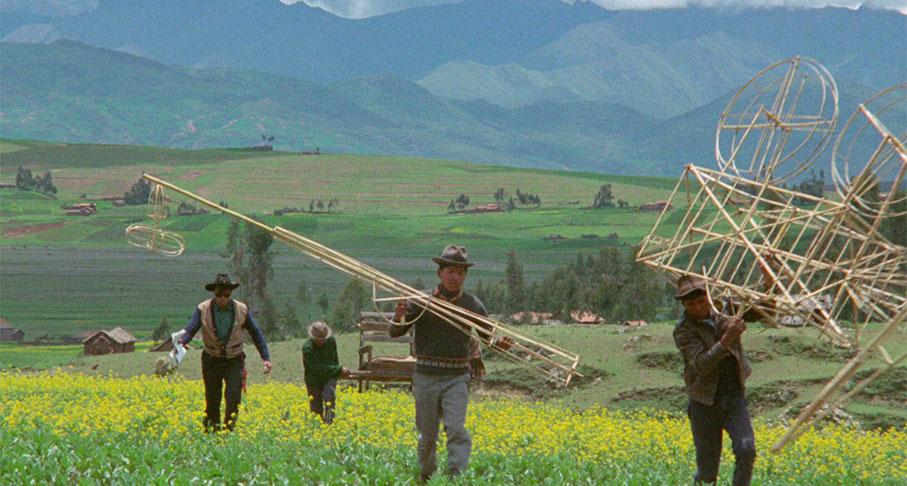
The first thirty minutes have an almost cubist feel, taking a broken mirror approach to storytelling that fractures the timeline in a manner that can prove so disorientating in places that a second viewing is needed if you want to make linear sense of the unfolding narrative. In some ways, it plays like an extended prologue to the film's more conventionally linear second act, a theory that Hopper underscores by inserting the main title just before the style switch, almost half-an-hour into the film. When the style later switches again and plunges Kansas headlong into the filmmaking rituals of the Peruvian cultists, the fractured storytelling of the first third takes on a more hallucinatory tone in a subjective reflection of the injured Kansas's disorientation, one inspired, perhaps, but the volume of drugs and alcohol being consumed by filmmakers who still delivered their movie on schedule and on budget.
That this is also a film about filmmaking is evident in both its content and structure, from the early documentary-like naturalism of the movie shoot and wrap party to the games played with traditional linear film storytelling, not to mention the casting of real-world maverick filmmaker Sam Fuller as the in-film director. The fourth wall also takes an early subtle nudge when Kansas rides to the film set to the sound of Kris Kristofferson's Me and Bobby McGee, only to then ride past Kristofferson himself – who plays the in-film minstrel wrangler – playing and singing this very song, a trick later recycled for comic effect by Mel Brooks in Blazing Saddles and Woody Allen in Bananas. Later, the fourth wall collapses completely when a drunken Kansas realises that he does not have his injury makeup on, while the priest giggles helplessly beside him and pokes an irate Mercado in the face with a bamboo crucifix, not for any narrative purpose but because actor Tomas Milan had been fed acid-spiked cake and had subsequently lost all sense of self-control.
The film-within-a-film structure also invites us to rethink how we see and interpret aspects of the mid-film linear drama that we might normally take at face value. One example begins when Kansas attempts to prevent the Peruvian cultists from injuring each other by demonstrating how punches are faked for the movies, which echoes later when Kansas slaps Maria, which is filmed from an angle that allows Hopper to fake the hit in the earlier demonstrated manner. The next day, however, when Kansas agrees to do anything to procure the fur coat for Maria and becomes a submissive slave to Mrs. Anderson's dominatrix leanings, the slap to the face he receives is shot from an angle that leaves no doubt that very real physical contact was made.
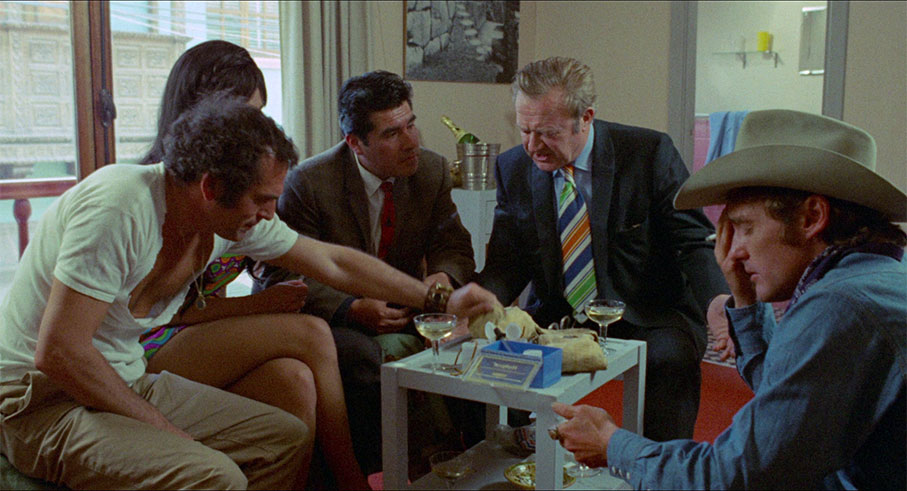
Although technically and artistically impressive throughout (László Kovács' cinematography and David Berlatsky, Antranig Mahakian and Hopper's editing are both first-rate), tonally the film is uneven in a way that can prove frustrating for first-time viewers, as experimentation gives way suddenly to linear storytelling, where economically staged scenes sit side-by-side with others that can feel overlong by comparison. Yet just as a second or third viewing helps to clarify the specifics of the broken mirror structure of the first act, it also suggests a purpose to this sometimes inconsistent pacing and reveals a secondary subtext to many of these scenes, as well as allowing viewers to spot the more subtle thematic threads that run throughout the film. That still doesn't make The Last Movie anything close to a leisurely watch, but then it seems to me that it was never designed to be so. We're at the tail end of the 1960s here, when filmmakers were absorbing the influence of the French Nouvelle Vague and exploring new ways of telling new stories, and there's little doubt that the creative process here underwent a degree of chemical enhancement, particularly during the year-long editing stage.
I do remain, however, a tad uncomfortable with one particular aspect that has nothing to do with Hopper's stylistic and editing choices. Back when I first watched The Last Movie many years ago, what bugged me the most was the suggestion that the Peruvians might believe that they could recreate the experience of shooting a movie using wireframe bamboo effigies of a camera, sound boom and lights. It's an attitude that – however unintentionally – harks back to the early days of cinema, where ‘civilised' whites were pitted against ‘primitive' black natives in lands that were once regarded as legitimate targets for colonisation and plunder, and here effectively casts the Peruvians almost as simple-minded children. A second viewing of the film some years later clarified that this aspect was intended to be read in metaphorical terms and that the Peruvians do not actually believe that they are making a movie, but have instead created a sacrilegious cult around the process of doing so, replacing the icons of their former religion with creatively crafted effigies of movie equipment. They are even led in this ritual by an energetic and persuasive cult leader in the shape of Mercado, who controls his flock by adopting the role (and even the US cavalry hat) of the director of the film shoot that they are recreating. It's an intriguing concept that is ripe for discussion and layered reading, but this still casts the visiting American production team as (metaphoric) gods and the captivated Peruvian locals as easily-led sheep who are able to discard their centuries-old religion in a heartbeat in favour of a new one based not on faith, but on the observed behaviour of these alien visitors.
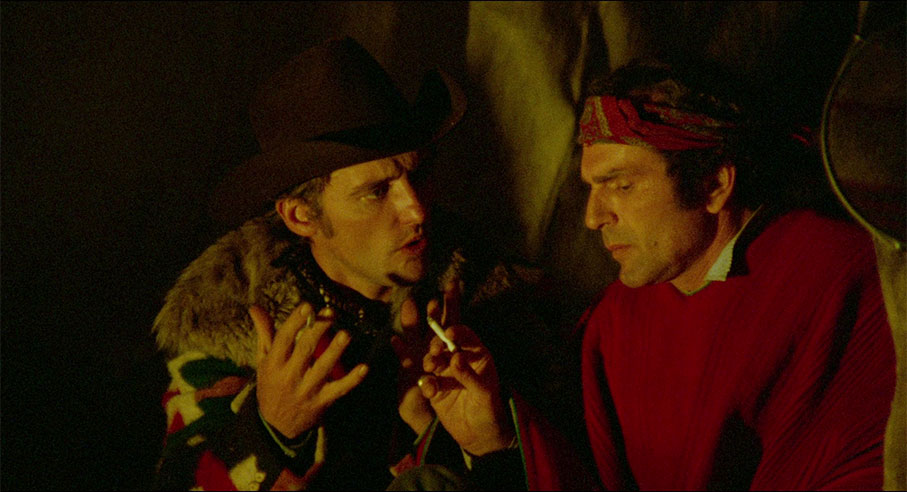
In all other respects, however, time and successive viewings have turned me all around on a film I was once dismissive of and now find myself repeatedly drawn back to, each time finding small but still significant narrative and thematic threads that give the film a subtextual cohesion, even as the surface style-shifts and fragments. I am, of course, fully aware that I may be reading meaning into content that actually has none, and making meaningful connections out of things that were the result of nothing more than chance and coincidence. Yet this is a work whose structure alone encourages such a depth of reading, and speaking as someone who looks for secondary meaning in every film he sees, this continues even after multiple viewings to prove a rewarding task. This digging for small treasures even has its in-film parallel in the shape of Neville's mine, something that may actually contain nothing of value but whose later discovered riches count for little to the project's investors because the process of extracting them is deemed to be too much work. That, for me, is The Last Movie in a nutshell, a potential cinematic goldmine whose assets require time and patience to unearth, a process that will bring rewards for some but for others will turn up nothing of value. The studio bosses at Universal certainly found no nuggets and were apparently left bemused by the film, a response that is slyly predicted during a campfire conversation between Kansas and Neville in the film's final mining trip flashback, when the agitated Kansas expresses his concern that, for all his confident bluff, his companion probably wouldn't recognise gold if he saw it.
The 4K restoration here was carried out by Arbelos Films from the original camera negative, with material drawn from other sources for shots where the negative was not available, and while I didn't get to see it on the big screen I can at least confirm that it looks terrific in its 1080p incarnation on Blu-ray. The naturalistic lighting and slightly muted colours of the interior scenes give way to some glorious exteriors where the red of Kansas's truck and the yellow flowers through which he rides really beam from the screen without ever feeling over-saturated. Contrast is very nicely graded, with solid blacks that only soften a whisker during a couple of the darker shots to retain shadow detail. The crispness of the detail can vary slightly, which I presume indicates which shots were not able to be sourced from the negative, but at its best it is excellent. Damage and dust spots have been banished, and there's an organic film grain visible throughout.
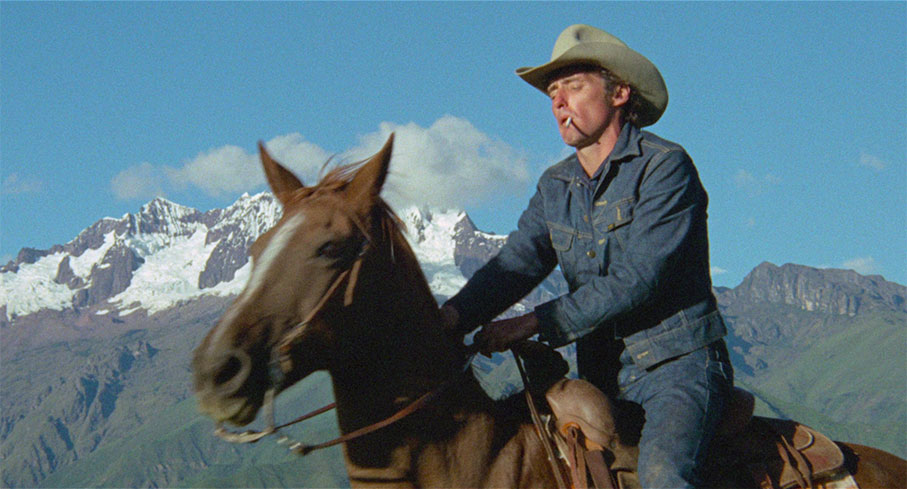
The Linear PCM 1.0 mono track has also been restored and remastered and is in impressive shape, with clear rendition of dialogue and sound effects and no distractive background hiss or damage to content with. The music sounds particularly good and boasts a stronger dynamic range than expected, with robust bass and no clipping on the trebles.
Optional English subtitles for the deaf and hearing impaired have been included.
The Guardian Interview with Dennis Hopper (91:08)
The thunderous applause and cheers that greet Hopper as he mounts the stage in this audio-only recording of a Guardian interview, one conducted by critic Derek Malcolm as part of the 1990 London Film Festival, should give you a good idea of the esteem in which this actor-director is held by film devotees. And Hopper doesn't disappoint here, regaling his audience at some length with lively and entertaining tales of his years of drug and drink addiction and his subsequent recovery, his friendship with James Dean and what he learned from him about acting, his initially career-stalling experience of working for Henry Hathaway (a story that will be retold twice more in the special features), and plenty more. He cheerily answers questions from the audience about working with Andy Warhol, the differences between his directorial style and that of David Lynch, and the favourite of the films he has appeared in as an actor. He also reveals that he turned down the job of directing Pretty Woman and has nothing but praise for a then soon-to–be-released film titled Dancing with Wolves. The sound quality is a little tinny in places but clear enough for the most part – there is a notable wobble in the quality at one point, and Hopper blows out the sound levels completely when he imitates the angry bellowing of Henry Hathaway. I really enjoyed this extra.
Dennis Hopper Video Introduction (1:14)
An introduction to the film by Hopper made to camera to be shown at an unspecified screening of The Last Movie that he was unable to attend in person, in which he hints at Godard's influence on the film by quoting one of that filmmaker's most famous proclamations, "A story should have a beginning, a middle and an end, but not necessarily in that order."
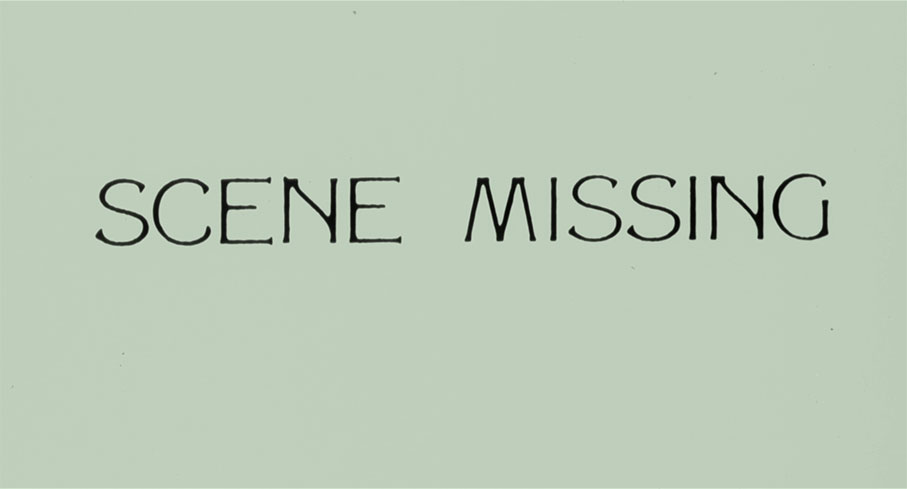
Scene Missing (49:15)
A 2012 documentary directed and partially shot by Alex Cox, who talks to a number of those involved in the making of The Last Movie, including producer Paul Lewis, screenwriter Stewart Stern, set builder Philip Thomas, sound effects editor Jim Nelson and actors Don Gordon, Henry Jaglom and Tomas Milan. Also interviewed are Satya De La Manitou, who for many years was Hopper's closest friend, and Tod Davies, the screenwriter on later Hopper films Backtrack and The Hot Spot but who is also curiously captioned here as "former henchwoman." Sticklers for technical polish may have a few issues with Cox's shoot-as-you-find-it approach, which sees interviews conducted in a variety of sometimes less-than-ideal locations using available light, which intermittently results in the background being sharper than the subject. But this really is all about what the contributors have to say about the making of the film and Hopper in particular, and there's plenty of considerable interest on that score. Stern talks about meeting Hopper and the process of developing the script with him, Jaglom and Lewis tell a story about drug use on the plane to Peru that nearly resulted in multiple arrests, Milan is brought to tears by the memory of shooting the scene where he was drugged and then downed a whole bottle of booze, and Nelson has an interesting insight into the changes the edit underwent to transform an originally linear story into the film as it now is. The most brutally damning assessment of the movie comes from Tod Davies, who describes The Last Movie as, "just another white guy waving his penis around saying he was Jesus Christ and feeling sorry for himself movie." Ouch. There's plenty of worth listening to here.
Some Kind of Genius (29:14)
Directed in 1986 by Paul Joyce, this is less an interview with Hopper than a casual conversation, shot handheld at his home to allow him to walk about and switch position as he speaks, which seems to have been effective at putting him at ease. Some of the stories – including meeting and learning from James Dean and how his problems with Henry Hathaway put his career on hold for seven years – are repeated in the Guardian interview detailed above (sometimes almost word-for-word), but we also get information on the performances that inspired him as a young actor, info on the genesis of Easy Rider, the conception and making of The Last Movie, the comparative speed with which Out of the Blue was shot and edited, and more.
Postcard From Peru (31:08)
A number of the residents of the Peruvian town of Chinchero who worked on The Last Movie are interviewed about their memories of the shoot. Confounding my original beliefs, they confirm that the villagers had no experience of photography or movies until the arrival of Hopper and his crew, and that they did indeed initially think that staged violence was real. Clearly, however, they were quick to understand the process and contribute to it, building sets, painting backdrops and marshalling local extras. There are, unsurprisingly, some interesting stories about Hopper, who could lose his rag at the cast when things weren't going well but is primarily remembered for his sociable nature, his craziness and for drinking lots of wine. There's a nice story about how the villagers pulled together to repair a problem road overnight after complaints about its condition, a gesture that apparently reduced Hopper to tears, and the filming was marked by the community in a rather touching way, when a boy who was born during the shoot was named Dennis after the director.
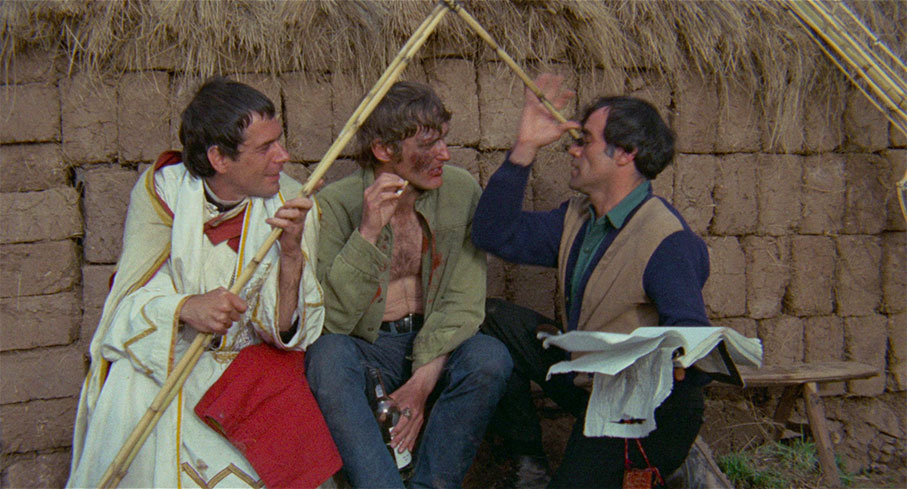
8mm On-set Footage (10:07)
Silent on-location 8mm film footage filmed in 1970 by actors John Phillip Law and Victor Maymudes, which includes shots of Hopper directing, actors caught off-guard and some of the stunts, which are captured in slow-motion in a manner similar to the feature.
The Dick Cavett Show(6:33)
A denim-dressed, hippied-up Hopper looks gloriously out-of-place in the company of the suited talk show host Dick Cavett and his conservatively dressed guests, and his responses to Cavett's questions sometimes bemuse his host. Almost the entire second half of this extra is devoted to a lengthy extract from the film, and while I may be wrong, it looks like there was quite a bit more to this interview that's not included here, whose absence I'm putting down to an issue with the rights.
Restoration Demonstration (2:57)
Several shots from the film shown before and after the restoration, with the restored version revealed through a wipe from the untreated footage. As so often with such features, the pre-restoration version looks ungraded and so lacks the contrast and colour depth of the restored (and graded) version. The original footage is also open-matte and is cropped to 1.85:1 on the restoration. No specifics are revealed about the restoration process, which personally I would have found interesting.
1971 Product Reel (1:01)
A short archive promotional piece, very much of its era but in spanking shape.
1971 Theatrical Trailer (2:02)
An interesting trailer that attempts to make a benefit of the negative press stories surrounding the film's production and the stark division in critical opinion on the finished work (a technique that has since been imitated for the promotion of a number of critically divisive films), suggesting that "only a significant motion picture can trigger such a vehement reaction" and encouraging you to see not just its merits and its daring idea, but also its faults, adding, "Your opinion could be the most valid of all." Bravo.
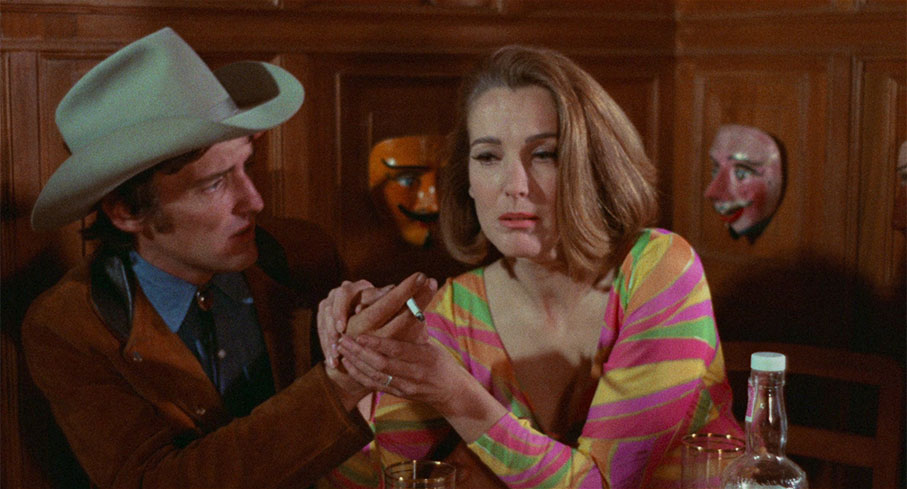
2018 Reissue Trailer(2:15)
An effective enough trailer, emblazoned with positive quotes from commentators who really liked the film. Unsurprisingly, it's in far better shape than the original trailer.
Image Gallery
26 slides of promotional stills, posters, and photos taken during the shoot by Perter Sorel.
Booklet
In a break from the usual Indicator booklet content, instead of a selection of essays, interview snippets, press material and contemporary reviews, here 48 pages of the 80-page booklet (and I'm including the front and back covers in that count) are given over to a single essay on the film and its making by filmmaker Alex Cox, one so authoritative and detailed that it almost constitutes a stand-alone book, and it certainly looks and feels like one. Some of the content has been sourced from Cox's documentary, Scene Missing, which is included on this disc and is the title of this essay, but there's so much more to digest here, including revealing information on the writing and content of the script and the production and post-production of the film itself. It's a terrific and hugely educational read, and one of the best special features in this set. For the record, on the remaining pages you'll find full credits for the film, handsomely reproduced promotional stills and artwork, credits foir this disc and details on the restoration.
Also included is a double-sided, fold-out poster, which is printed on very high quality paper.
The Last Movie was and remains challenging cinema and I mean that as a compliment. It's unpredictable and experimental in a way that only late 60s and early 70s studio cinema was ever allowed to be in America, but this time Hopper's chance-taking blew up in his face. I can see why it's disliked as passionately as it's loved, and know that had I not been given the chance to revisit it, I'd still be carrying round the unsatisfied memory of that long-ago first viewing. Now I seem to find something new of interest every time I watch it, some new subtextual of thematic thread or seemingly small but significant detail that I previously missed. If you're coming to the film for the first time then it's a good idea to do so prepared, but Indicator's wonderfully featured Blu-ray is definitely the way to do it. Highly recommended for those who are game.
|